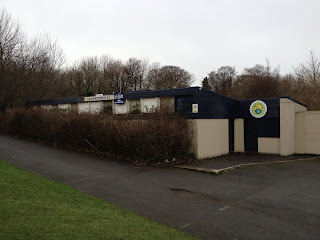Spartans FC are a Scottish non league football club based in the north of Edinburgh, having being formed in 1951 with the original intention of the players being made up of former students of Edinburgh University although the rule was later relaxed.
The club immediately joined the East of Scotland League and won their first title in 1971-72. In 1976 Spartans became full members of the Scottish FA and moved into City Park on Ferry Road when it was vacated by Ferranti Thistle, who became Meadowbank Thistle on joining the Scottish League. Spartans also began competing in the Scottish Qualifying Cup at the same time in the hope of progressing in the competition proper.

In 1978-79 Spartans competed in the Scottish Cup for the first time, receiving a bye before knocking out East Stirlingshire. A second league title was added in 1996-97 and a third in 2001-02 and fourth in 2003-04. However their fifth title in 2004-05 also coincided with an amazing Scottish Cup run as Alloa Athletic and then Arbroath were defeated setting up a fourth round clash with Livingston at City Park, which attracted a capacity crowd of 3,200. Livi ran out 4-0 winners after being held until the interval.

The following season saw Spartans embark on another fine Cup run. Berwick Rangers and then Queen's Park were beaten at City Park leading to a fourth round tie against first division St Mirren. The Buddies escaped from City Park with a scoreless draw in front of 3,346 with some placed on temporary seating to increase the capacity following the demolition of the rotting old stand. Spartans went down 3-0 at Love Street while backed by nine hundred of their travelling fans.

In July 2008 Spartans applied for the space in the Scottish League vacated by Gretna, but they lost out in the vote to Annan Athletic. In November of that year the club left City Park to move five hundred yards to a new facility at Ainslie Park. Spartans didn't look back winning the league at the end of the season and going on to retain it twice to complete a hat trick, while developing their youth and womens teams at the club through their thriving academy.
The club almost made it four in a row but Dougie Samuel's side lost out on goal difference at the end of the 2011-12 season.
Spartans FC will compete in the East of Scotland League Premier Division in the 2013-14 season.

My visit
Tuesday 29th January 2013
Spartans FC was one of several clubs I earmarked for a visit once it was apparent that I'd have a day to kill in Edinburgh. Having called in at a few venues on the hill up to Ferry Road I'd taken some shots of the abandoned City Park
(see http://worldgroundhoptwo.blogspot.co.uk/search/label/City%20Park%20%28Edinburgh%29).

I continued up Pilton Drive across a bridge which once ran over a railway and into the entrance to the Ainslie Park Leisure Centre. By walking around the south end of the building I came to the gates of the Spartans Community Football Academy. I passed a full sized 3G artificial pitch, which could also be divided into smaller side pitches and through an open gate to the main arena.
Again the pitch was a 3G surface which looked in pristine condition, unlike the pitch surrounds which were waterlogged. The two storey building housing the clubhouse, changing rooms and offices were the first structure I came across by the entrance with a turnstile for spectators opposite. On the ground floor the shutters concealed a snack bar for use on match days. Further behind the goal was a five a side court and then beyond it a small grass bank, which continued down the far touchline and behind the far goal. On the fourth side there was flat hard standing and then a neat seated grandstand dividing the two pitches.

I was extremely impressed by the set up at Ainslee Park, as the club had made it extremely homely plus there was room for expansion should they wish to try again to apply for Scottish League membership. I continued on my way along the disused railway to catch a bus heading towards Saughton in search of my next ground.










































